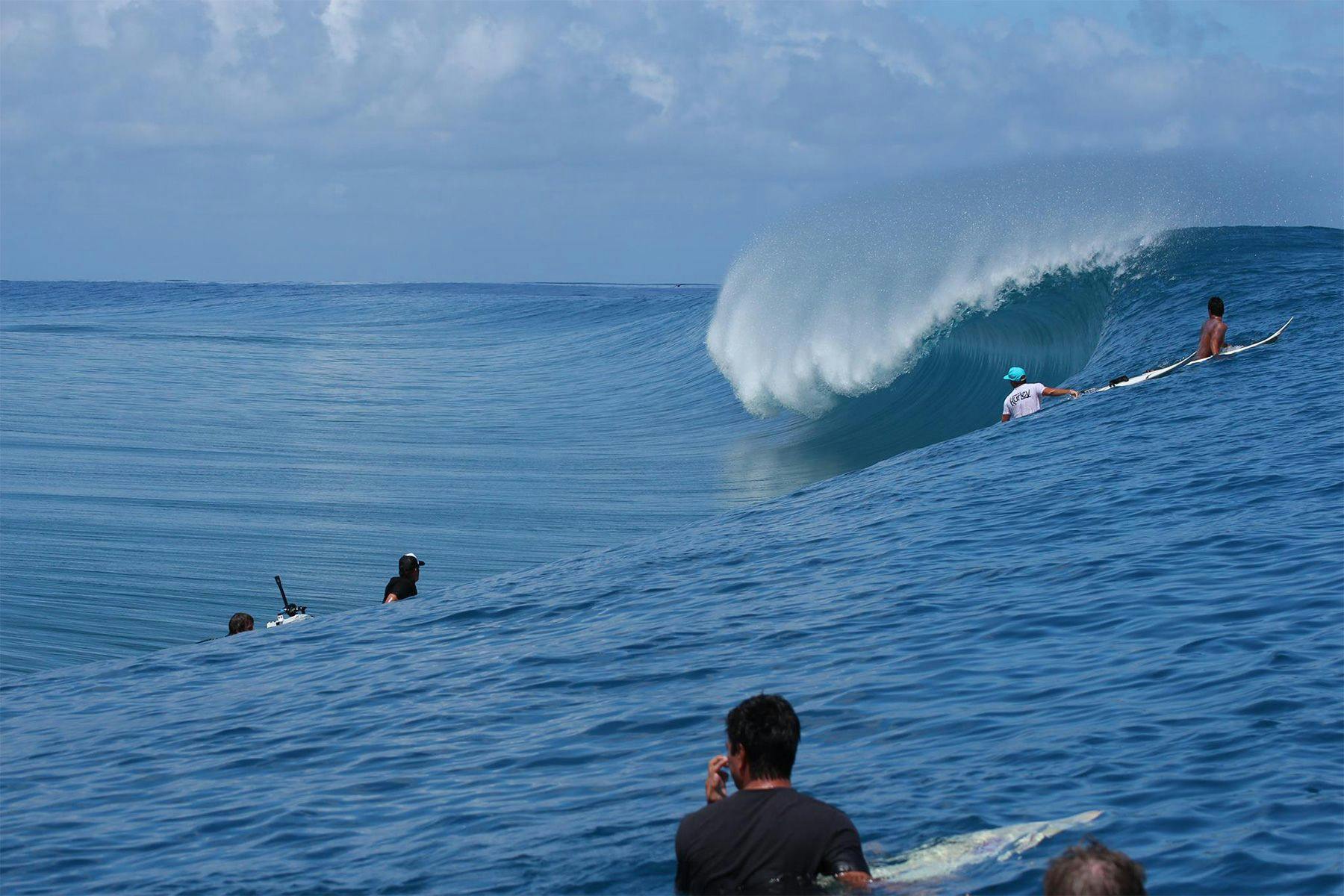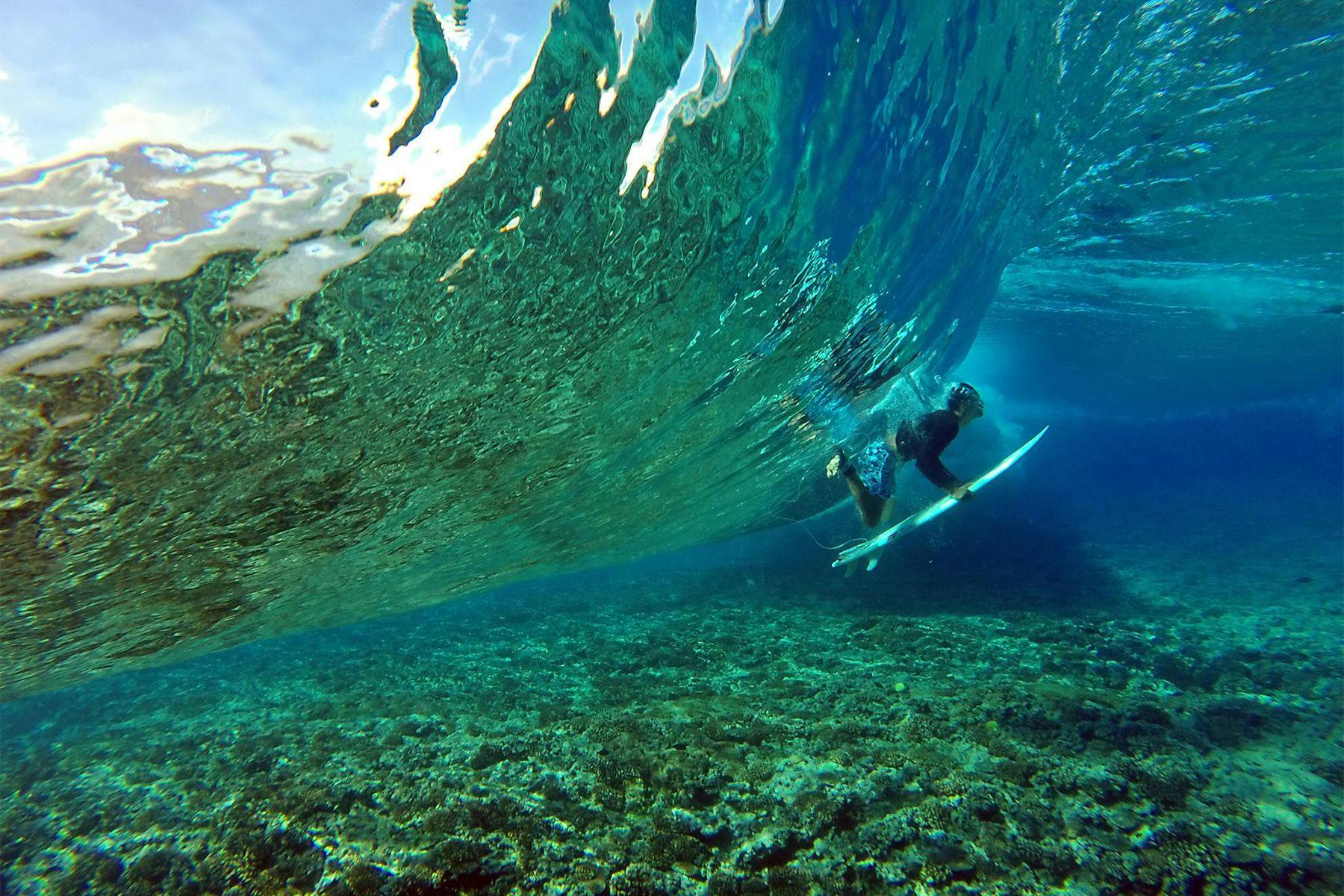Surf ContestsThe Cost of a Contest: Teahupo’o’s Towers and The Olympics

From 26 July to 11 August 2024, Paris will host the XXXIII Olympic Summer Games. For the second time in the event’s history, surfers will compete for medals. Surfing’s inclusion in the Olympics in 2020 was a debate in itself that divided the everyday surfers who cared to consider it, but there was no denying the global exposure that surfing received as a result of its new status as an Olympic sport. Now, as we approach the 2024 Summer Games, the controversy and debate around surfing in the Olympics is not so much whether or not it is good thing for the sport and culture, but whether or not it will be a good thing for the venue. The venue selected by the organisers, is Teahupo’o, 15,000km away from Paris in Tahiti, French Polynesia.

For the past two decades, surf contests at “The End of The Road” have been judged, officiated and live-streamed to the surfing world from a temporary wooden tower built on the reef. Every year, after the Tahiti Pro, it is taken down and stored away in containers, then a year later is taken out, any repairs and replacements are made, and it is reassembled in the lagoon. In the words of legendary Tahiti-based surf photographer Tim McKenna, “Sometimes a few pieces of wood need to be changed but it has basically been the same structure for the last 20 years.”
The Olympics is not your standard surf contest, however. The games are the biggest sporting events in the world, large and complex enough to be termed ‘mega events’, costing billions of dollars and having a significant impact on the host nation’s global trade and international stature. This brings with it a world of bureaucracy, the result of which is that the existing infrastructure at this otherwise rural location did not meet the organiser’s strict specifications. Specifically: the existing wooden judging tower, and athlete accommodation.
The Polynesian Government, Paris 2024, and the Haut-Commissariat found the existing tower’s foundations to have been weakened (mainly by corrosion). They have not publicly shared that study despite numerous requests by campaigners. Reinforcing these original foundations “would have a greater impact on the coral reef”, and the option of constructing a new wooden tower “would have been impossible to carry out … in the time available,” according to Inside the Games reporter David Rubio Salguero. Judging and broadcasting the event from shore or boats in the channel was also ruled out. The proposed solution was a new (removable) 14m aluminium structure, on 12 new permanent foundations in the reef at a cost of US $5m. The new foundations would require at least 56 holes to be drilled into the reef. The tower needs to accommodate more people (up to 40), meet security standards, have permanent pipes and cables connecting it to shore through an 800m service channel to provide electricity, high-speed internet and running water for toilets on the tower. The structure will include an air-conditioned room for internet servers and electronic terminals. Local residents, surfers and environmentalists were outraged at the scale of destruction being suggested for three days of competition.
“The problem is simple, in order to have the Olympics in Teahupo’o, Paris 2024 wants to replace the normal tower with the new aluminium tower that has new concrete foundations. Just because they want air-conditioning, toilets, this new construction is going to destroy a big part of the reef. The risks are simple and nasty: destruction of the reef and a very bad impact on the marine ecosystem that could stress the whole marine life and spread what is called ciguatera*. Ciguatera is a disease that poisons all the fish. Teahupo’o is a town of fishermen who eat their own fish and live off selling them. And last but not least, it could modify or change our wave, and in the worst case scenario, make it disappear in a few years.”
- Matahi Drollet
By the first week of November 150,000 people had signed an online petition against the new aluminium tower (now, in early December, just shy of 200,000 signatories). President of French Polynesia Moetai Brotherson suggested that the venue be changed to a surf break that didn’t require any inshore infrastructure, but Paris 2024 organisers stated that their ambition is that “the Games adapt to Teahupo’o and not the other way round.” Talks were held, and by mid-November plans were amended to construct a “more moderate” judging tower that would match the previous wooden tower in size and weight, reducing the weight on the foundations. This, organisers stated, would reduce the depth of drilling required. They promised to work with local experts to minimise the risk to corals and even suggested that some corals would be moved for their protection during the construction work. Campaigners were not convinced by the changes, and opposition gathered momentum.
“Doesn’t make sense to need such a giant tower for a 2 days event one time. Give the money to local infrastructure in the town for all the damage done from changing the river that caused floods earlier this year. The judges can get on that tower. Or rebuild the frame on same footing.”
- Kelly Slater
Then, on Saturday December 2nd as pre-construction tests commenced, a barge grounded on the reef multiple times, destroying all of the coral underneath it and breaking its own propeller. The barge was empty, and the groundings occurred at high tide, raising questions about the damage that would be inflicted on this fragile ecosystem when the barge is fully loaded, or at anything other than high tide. The incident prompted the French Polynesian government to "pause all further testing and preparations to draw lessons following the incident on the reef,” a move welcomed by the ISA (International Surfing Association) who said that they were “saddened and surprised” by what had happened.
“Every time we modify the environment we see, not immediately, but years later, issues arising and it’s too late to fix them. Everyone benefits from the coral reefs. They are the lungs and rainforest of our oceans, and the oceans produce more than half of the oxygen we breathe everyday. We have been planting corals for many years, and trust me, it’s a long and complicated process to plant just one single coral. The truth is, coral could be completely gone by 2050. To the Paris 2024 Commitee, the Olympic Games are an example of shared values and should lead the way. What will we tell the next generation, that for three days of competition we could have destroyed one of the most important ecosystems on our planet?”
- Titouan Bermnicot – CEO, Coral Gardeners

Coral reefs around the world are highly valued as biodiverse ecosystems that protect coastlines from storms and erosion, are a source of food, and that provide jobs for local communities. Over half a billion people around the world directly depend on them, but we all depend on them as a pillar of a healthy ocean that powers our planet and provides half of the air that we breathe. The saying goes that something “shouldn’t cost the earth”, but in this case it shouldn’t cost the ocean.
“No contest in this world is worth the destruction of nature.”
- Matahi Drollet
Add your name to the change.org petition calling upon the government of French Polynesia to reconsider the planned new judging tower for the 2024 Olympics here:
CLICK TO SIGN
*The disruption of coral has been known to augment levels of ciguatera, a dangerous neurotoxin that comes from a micro algae that grows on dead coral.
Surf Simply Magazine would like to thank Nick Stokes for sharing his imagery of Tahiti and Teahupo'o with us for this article.